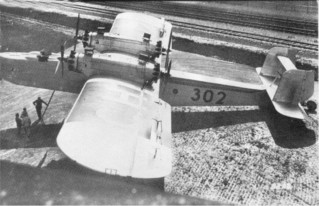
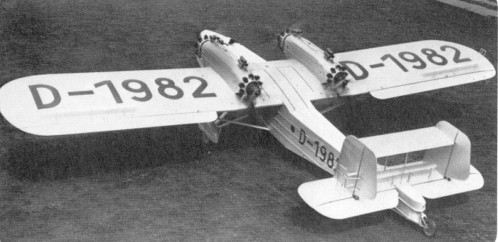
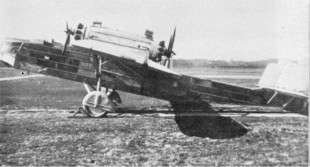
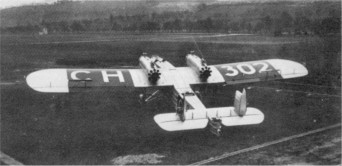
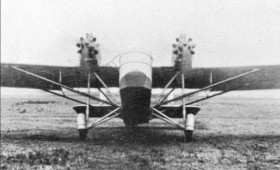
This four-engined six-seat heavy bomber was developed as
part of the secret rearmament of the German forces. Due to a requirement
of the Fliegergruppe (Aviation Department) in the RWM
(Reichswehrministerium, State Defense Ministry), the RVM
(Reichsverkehrsministerium, Ministry of Transportation) awarded a
development contract to Dornier on March 29, 1929.
Construction of the prototype was started at Manzell, Friedrichshafen in July
1929. and fitted with four 525 hp Siemens Jupiter VI engines, the first flight
took place at the factory airfield Friedrichshafen-Löwenthal on March 31,
1930. In the same year it was tested at the Swiss Dornier factory at
Altenrhein (some 13 mis. 21 km across Lake Constance), where it
subsequently was modified to a bomber It could carry sixty 110 lb (50 kg)
bombs internally, or four 551 lb (250 kg) bombs externally and twenty 55 lb
(25 kg) bombs internally. For testing it was registered in Switzerland on
November 24, 1930, as CH-302 to Aero Metall AG in Zürich, another
Dornier company.
After completion of the testing the military equipment was removed at
Altenrhein, to improve longitudinal stability an additional stabilizer was fitted
between the two fins. The aircraft returned to Germany, first to
Friedrichshafen-Löwenthal and finally to the DVL (Deutsche
Versuchsanstalt für Luftfahrt. German Aviation Laboratory) at Berlin-
Staaken Already on March 20, 1931. the DVL had taken over the aircraft for
the RDL (Reichsverband der Deutschen Luftfahrtindustrie, National
Association of the German aerospace industry), by then registered under
the German registration D-1982, as a night freight aircraft.
At that time the RDL operated not only the disguised military installations at
Staaken, but also Rechlin, Travemünde, Johannesthal and especially in
Lipetsk, Russia, where in 1932 the Do P was put through technical and
tactical tests. Among other things, it tested the newly developed MG 15
machinegun (fitted on the new D 30 turntable mount) of which three were
provided, one each in the nose, dorsal and ventral position. When Lipetsk
was dissolved in October 1933. the aircraft was left behind as it had been
judged as "of no strategic value", it served with the Soviets as a trainer until
it crashed in 1935.
| Type |
6 seat bomber |
| Engine |
4 Siemens Jupiter VI 6,3 u with 4-bladed wooden Dornier propellers |
| Dimensions |
Length 23.4 m, height 7.3 m, span 30.0 m, wing area 152.6 m2 |
| Weights |
Empty 8000 kg, flying weight 12000 kg |
| Performance |
Max. speed 210 km/h at sea level, climb to 2000 m 13.2 min., service ceiling 3500 m, range 1000 km |
| Armament |
(Proposed, partly tested) 1 MG 15 in the nose, 1 MG 15 in a dorsal position, 1 MG 15 in the tail, 1 MG 15 in a ventral position. Bombload : 60 x 50 kg internally or 4 x 250 kg bombs externally and 20 x 25 kg bommbs internally |
| Type |
Werk.Nr |
Registration |
History |
|
|
CH 302 |
First flight 31/3 1930 at Löwenthal. Tested in Switzerland the same year, modified to a bomber at Altenrhein. In March 1931 taken over by the RVM and used as a transport. Tested at Lipezk in summer 1932. After closing down the Lipezk in October 1933 the aircraft was given to the Sovietunion.(Roeder ). Crashed during testing (Stützer ) |
|
180 |
D-1982 |
Unarmed , used as a trainer at least until 1935 |





